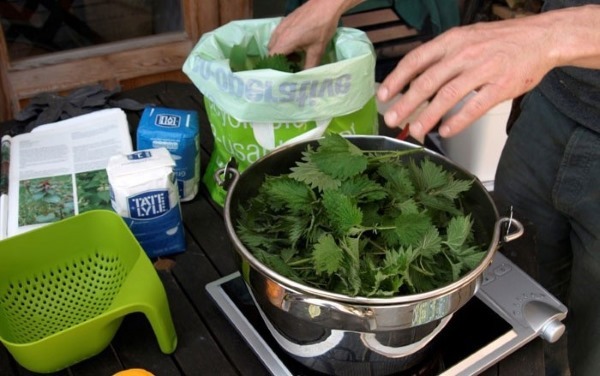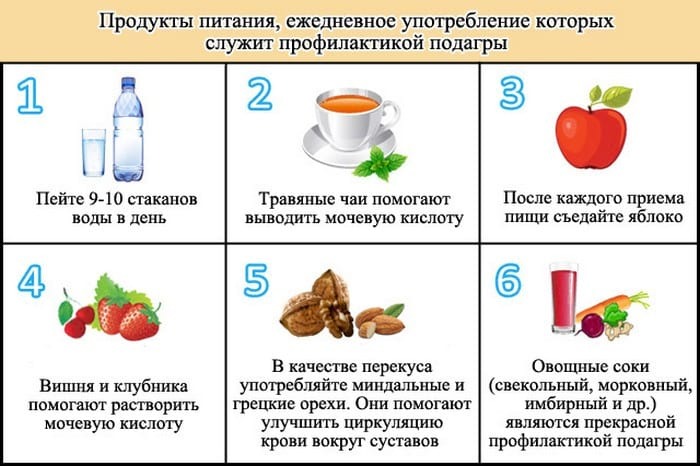An interesting fact is that women most commonly diagnosed tumor called pleurisy. It develops on the background of various neoplasms genitals and breasts. As for men, the exudative pleural effusion often occurs when the pancreas pathology and rheumatoid arthritis. In most cases, bilateral or unilateral pleural effusion is secondary.

What it is?
Pleurisy - inflammation of the pleural sheets with their precipitation on the surface of fibrin (dry pleurisy) or accumulation of exudate in the pleural cavity of a different nature (pleural effusion).
This term refers to the process in the pleural cavity, accompanied by the pathological accumulation of exudate when inflammatory nature of pleural changes is not certain. Among its causes - infections, chest trauma, tumors.
Causes
The causes of pleurisy can be divided into infectious and inflammatory or aseptic (non-infectious).
Noncommunicable pleurisy typically occur
- at rheumatoid arthritis,
- at vasculitis (Vascular damage)
- rheumatism,
- at systemic lupus erythematosus,
- at scleroderma,
- as a result of pulmonary embolism and pulmonary edema,
- with pulmonary infarction,
- matestazirovanii with lung cancer in the pleural cavity,
- with primary malignant tumor of the pleura - Mesothelioma
- lymphoma,
- during a hemorrhagic diathesis (coagulation disorders)
- while leukemia,
- when malignancy of ovarian, breast cancer as a result of cancer cachexia (terminal stage of cancer),
- myocardial infarction due to the stagnation in the pulmonary circulation.
- for acute pancreatitis.
By infectious include:
- syphilitic or tubercular pleurisy,
- parasitic (hydatid or amoebic)
- pleurisy with particularly dangerous infections (tularemia, brucellosis, typhoid fever caused by a microbe or arising at typhus),
- microbial pleurisy (infection of the pleural cavity staphylococcus, Escherichia coli and Pseudomonas aeruginosa, and pneumococcal etc.)
- viral pleurisy (arising from the virus infection of influenza, herpes)
- fungal pleurisy (pleural candidiasis, coccidiosis, blastomycosis)
- pleurisy occurring in wounds or chest operations due to enter the pleural cavity microbes.
Classification
In clinical practice to allocate several types pleurisy, which differ by the nature of exudate formed in the pleural cavity and, respectively, the main clinical manifestations.
- Dry (fibrinous) pleurisy. It develops at the initial stage of an inflammatory pleural lesions. Often at this stage of pathology in the lung cavity are no infectious agents and emerging changes due reactive involving blood and lymphatic vessels, as well as allergic component. Due to the increased permeability of blood vessels under the action of proinflammatory substances in the pleural cavity It begins to leak and the liquid plasma component part of proteins, among which has the greatest value fibrin. Under the influence of the environment in inflammatory foci of fibrin molecules start to coalesce and form a strong adhesive and filaments, which are deposited on the surface of the serous membrane.
- purulent pleurisy. Between sheets serosa lung purulent exudate accumulates. This disease is very severe and is associated with intoxication. Without proper treatment constitutes a threat to the patient's life. Purulent pleuritis can be formed both by direct pleura lesions infectious agents, or manual opening of the abscess (accumulation of pus or other) light into the pleural cavity. Empyema usually develops in malnourished patients who have serious injury to other organs or systems, as well as people with reduced immunity.
- Exudative (exudative) pleurisy. It represents the next phase after dry pleurisy disease. At this stage, the inflammatory reaction progresses, the affected area increases serosa. Decreases the activity of enzymes cleaving fibrin strands, pleural pockets begin to form, which can subsequently accumulate pus. Lymph flow is disturbed, which is a background of increased fluid secretion (filtering of dilated blood vessels in inflammation), resulted in increased intrapleural effusion. This effusion compresses the lower segments of the lung on the affected side, which leads to a decrease in the volume of its life. As a consequence, when a massive pleural effusion may develop respiratory failure - a condition poses an immediate threat to the life of the patient. Since the liquid accumulated in the pleural cavity, to some extent reduces the friction between the sheets of the pleura, on this stage of irritation of the serous membranes and, consequently, the intensity of pain more decreases.
- tuberculous pleurisy. It is often singled out because of the fact that this disease is quite common in medical practice. For tuberculous pleurisy is characterized by slow, chronic developmental syndrome of general intoxication and symptoms of lung disease (in rare cases, and other organs). Effusion in tuberculous pleurisy contains a large number of lymphocytes. In some cases, this disease is accompanied by the formation of fibrinous pleurisy. When melting hearth infectious bronchi in the lungs in the pleural cavity can enter specific pus curd characteristic of this pathology.
This separation is in most cases somewhat arbitrary, as one type of pleurisy can often move in the other. Moreover, dry and exudative (exudative) pleurisy regarded by most of Chest Physicians as different stages of one of the pathological process. It is believed that initially formed dry pleurisy, exudative and developing only during further progression of the inflammatory response.

symptoms
The clinical picture of pleurisy is divided into dry and exudative.
Exudative pleurisy symptoms:
- malaise, weakness, low-grade fever;
- chest pain, shortness of breath increase, a gradual increase in heat - so is due to the collapse of the lung, mediastinal organs are squeezed.
Acute serous effusion usually has a tubercular origin, it is characterized by three stages:
- In the initial period (exudative) notes dithering or even bulging of the intercostal space. Mediastinal organs are displaced in a healthy way under the influence of large amounts of fluid in the pleural gap.
- stabilization period is characterized by a decrease in acute signs: temperature drops, chest pain and shortness of breath are. At this stage, pleural friction may occur. In the acute phase of a blood test shows a large concentration of white blood cells, which gradually returns to normal.
- It often happens that fluid accumulates above the diaphragm, so the vertical x-ray can not see it. In this case it is necessary to study the position on the side. Free liquid easily moves in accordance with the position of the patient's torso. Often its accumulation is concentrated in the gaps between the lobes, as well as in the area of the diaphragm dome.
Symptoms of dry pleurisy:
- chest pain;
- general unhealthy state;
- dry cough;
- subfebrile body temperature;
- local pain (depending on lesion location);
- palpation edges, deep breathing, coughing pain amplified.
In the acute course of disease diagnosed by physician auscultatory pleural noise which is not terminated after pressing stethoscope or cough. Dry pleurisy, usually passes without any negative consequences - of course, with adequate treatment algorithm.
For acute symptoms, in addition to the described serous pleurisy include purulent forms - pneumothorax and pleural empyema. They may be caused by tuberculosis and other infections.
Purulent pleurisy caused by hit of pus in the pleural cavity, where it tends to accumulate. It should be noted that non-tuberculous empyema relatively well to treatment, but with inadequate actions of the algorithm can go to a more complex form. Tuberculous empyema runs hard, it can be chronic. The patient loses much of its weight, pants, experiencing constant chills, suffers bouts of coughing. Besides the chronic form of this species causes of pleurisy amyloidosis of internal organs.
In case of not providing optimal care for complications arise:
- respiratory arrest;
- diversity of infection throughout the body through the bloodstream;
- the development purulent mediastinitis.
Diagnostics
The primary objective in the diagnosis of pleurisy - a finding locations and causes inflammation or swelling. For the diagnosis of the doctor examines in detail medical history and conducts the initial examination of the patient.
Basic methods of diagnosing lung pleurisy:
- Blood tests can help determine whether you have an infection, which may just be the cause of pleurisy. In addition, blood tests will show the state of the immune system.
- Chest x-ray will determine if there is any inflammation of the lungs. It may also be conducted chest x-ray in a supine position, allowing free fluid to form a layer of light. X-rays of the chest lying position to confirm whether there is any fluid buildup.
- Computed tomography has been held in the case if they find any abnormalities on chest X-ray. This analysis is a series of detailed, cross-private images of the thorax. Images produced by a CT scan, create a detailed picture of the inside of the chest, which will allow your doctor to get a more detailed analysis of tissue irritation.
- During thoracentesis doctor will insert a needle into the chest area, which will be used to carry out tests for the detection of liquids. The liquid is then removed, it is analyzed for the presence of infection. Due to its aggressive nature and the risks involved, this test is rarely done for a typical case of pleurisy.
- During thoracoscopy made a small incision in the chest wall and then inserted into the chest cavity of a tiny camera attached to the pipe. The camera determines the location of the irritated area, which will take a sample of tissue for analysis.
- A biopsy is useful in the development of pleurisy in oncology. In this case, the procedures used sterile and made small incisions in the skin of the chest wall. X-ray or CT scan can confirm the exact location of the biopsy. The physician can use this procedure to insert the needle lung biopsy between the ribs in the lung. Then takes a small sample of lung tissue, the needle is removed. The fabric is sent to a lab where it will be analyzed for infection and abnormal cells that are compatible with the cancer.
- With the help of ultrasound high-frequency sound waves create an image of the inside of the chest cavity, which will see if there is any inflammation or fluid buildup.
Once the symptoms of pleurisy identified treatment is given immediately. In the first place in the treatment are antibiotics against infection. In addition to that prescribed anti-inflammatory drugs or other painkillers. Sometimes prescribed cough syrup.

pleurisy treatment
Effective treatment of pleurisy depends entirely on its causes and is basically in the elimination of unpleasant symptoms and improve the patient's well-being. In the case of a combination of inflammation of the lungs and pleuritis antibiotic treatment is indicated. Pleurisy accompanying systemic vasculitis, rheumatic fever, scleroderma, is treated with glucocorticoid drugs.
Pleurisy, arising on a background of the disease tuberculosis, Treated with isoniazid, rifampicin, streptomycin. Usually, this treatment lasts for several months. In all cases of the disease are appointed diuretic, pain and cardiovascular drugs. Patients who do not have particular contraindications shown physiotherapy and physical therapy. Often the treatment of pleurisy in order to prevent recurrence of the disease is carried obliteration pleurodesis of the pleural cavity or - introducing into the cavity of the pleura special "gluing" of its leaflets drugs.
Patients were administered analgesics, anti-inflammatory drugs, antibiotics, drugs to combat cough and allergic manifestations. When tuberculous pleurisy carried out specific therapy with anti-TB drugs. When pleurisy resulting lung tumors or hilar lymph nodes, chemotherapy is appointed. Glucocorticosteroids are used in collagen diseases. When a large amount of fluid in the pleural cavity is shown holding a puncture with a view to sucking the content and the introduction of drugs directly into the cavity.
The rehabilitation period is assigned breathing exercises, physical therapy, restorative therapy.
prevention
Of course, it is impossible to predict how the body reacts to the action of a particular factor. However, any person is able to follow simple guidelines for the prevention of pleurisy:
- First of all, you can not avoid complications in the development of acute respiratory infections. To pathogenic microflora has not penetrated to the mucous membrane of the respiratory tract and then into the pleural cavity, colds can not ride!
- With frequent infections of the airways well in time to change the climate. The sea air is an excellent means of prevention of respiratory tract infections, including pleurisy.
- With suspected pneumonia timely better x-rays of the chest and start appropriate therapy. Incorrect treatment of the disease increases the risk of complications such as inflammation of the pleura.
- Try to strengthen the immune system. During warmer months, engaged in physical training, and spend more time outdoors.
- Give up smoking. Nicotine is the first cause of lung tuberculosis, which in turn can cause inflammation of the pleura.
- Perform breathing exercises. A couple of deep breaths after you wake up will serve as an excellent prevention of inflammatory respiratory diseases.

Forecast
Pleurisy favorable prognosis, while not directly linked to the master of the disease. Inflammatory, infectious, traumatic pleurisy treated successfully, and do not affect the quality of later life. Is that for a future life on radiographs will be marked pleural adhesions.
An exception is the dry tuberculous pleurisy, in which fibrous deposits can calcify with time, a so-called pachypleuritis. Easy is concluded in the "stone shell" that hinders its full functioning and leads to chronic respiratory failure.
To prevent the formation of adhesions that are formed after the removal of fluid from the pleural cavity, after treatment, the acute phase subsides when the patient should be rehabilitation procedures - a physiotherapy, manual and vibrating massage, be sure to conduct daily breathing exercises (Strelnikova by breathing Frolov's trainer).



